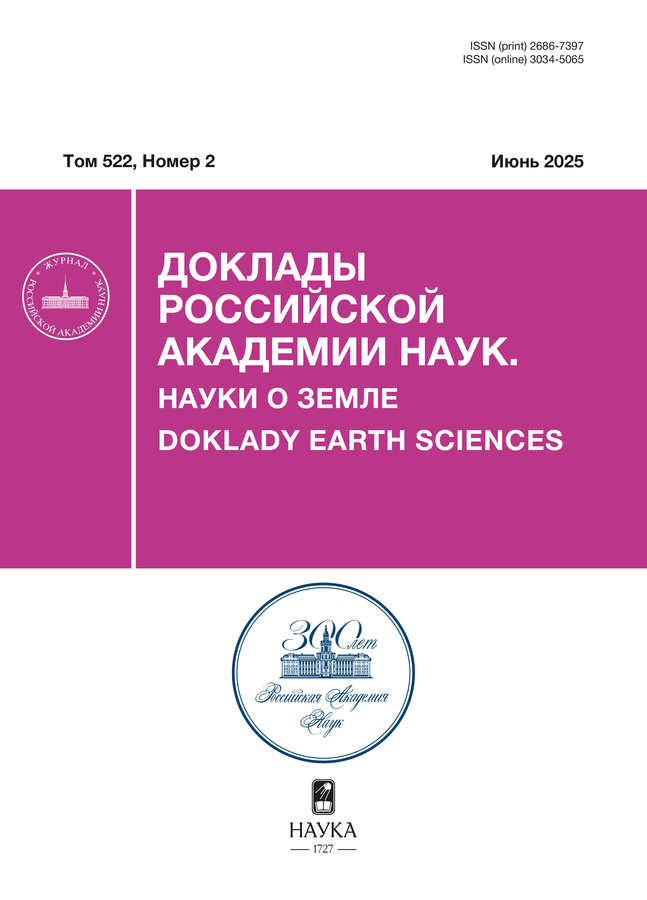Chronological Attribution of Iron-Smelting Furnaces and Landscapes of the Chuya-Kurai Paleo-Metallurgical Province (Russian Altai) Based on Tree-Ring Analysis and Radiocarbon Dating
- Authors: Agatova A.R.1,2, Nepop R.K.1,2, Myglan V.S.3, Barinov V.V.3, Petrozhitskiy A.V.4,5
-
Affiliations:
- V.S. Sobolev Institute of Geology and Mineralogy, Siberian Branch of the Russian Academy of Sciences
- Ural Federal University,
- Siberian Federal University
- Budker Institute of Nuclear Physics Siberian Branch of the Russian Academy of Sciences
- Novosibirsk State University
- Issue: Vol 522, No 2 (2025)
- Pages: 338-350
- Section: GEOECOLOGY
- Submitted: 15.10.2025
- Published: 15.06.2025
- URL: https://freezetech.ru/2686-7397/article/view/693310
- DOI: https://doi.org/10.31857/S2686739725060209
- ID: 693310
Cite item
Abstract
About the authors
A. R. Agatova
V.S. Sobolev Institute of Geology and Mineralogy, Siberian Branch of the Russian Academy of Sciences; Ural Federal University,
Email: agat@igm.nsc.ru
Novosibirsk, Russia; Ekaterinburg, Russia
R. K. Nepop
V.S. Sobolev Institute of Geology and Mineralogy, Siberian Branch of the Russian Academy of Sciences; Ural Federal University,Novosibirsk, Russia; Ekaterinburg, Russia
V. S. Myglan
Siberian Federal UniversityKrasnoyarsk, Russia
V. V. Barinov
Siberian Federal UniversityKrasnoyarsk, Russia
A. V. Petrozhitskiy
Budker Institute of Nuclear Physics Siberian Branch of the Russian Academy of Sciences; Novosibirsk State UniversityNovosibirsk, Russia; Novosibirsk, Russia
References
- Зиняков Н.М. История черной металлургии и кузнечного ремесла древнего Алтая. Томск: Изд-во ТГУ, 1988. 274 с.
- Vodyasov E.V., Zaitceva O.V., Vavulin M.V., Pushkarev A.A. The earliest box-shaped iron smelting furnaces in Asia: New data from Southern Siberia // Journal of Archaeological Science Reports. 2020. V. 31. P. 102383.
- Agatova A.R., Nepop R.K., Korsakov A.V. Vanishing iron-smelting furnaces of the South Eastern Altai, Russia – evidences for highly developed metallurgical production of ancient nomads // Quaternary International. 2018. V. 483. P. 124–135.
- Agatova A., Nepop R., Myglan V., Barinov V., Tainik A., Filatova M. Potentiality of charcoal as a dendrochronological and paleoclimatic archive: case study of archaeological charcoal from Southeastern Altai, Russia // Climate. 2023. V. 11(7). P. 150.
- Мураками Я., Соенов В.И., Трифанова С.В., Эбель А.В., Богданов Е.С., Соловьев А.И. Изучение памятников черной металлургии на Алтае в 2017 году // Вестник Томского государственного университета. История. 2019. № 60. C. 167–174.
- Гутак Я.М., Русанов Г.Г. О возрасте железоплавильных печей урочища Куяхтанар (Горный Алтай) // Вестник Сибирского государственного индустриального университета. 2013. № 2 (4). С. 18–20.
- Водясов Е.В., Зайцева О.В. Древнейшие памятники черной металлургии в Горном Алтае: новые данные из долины р. Юстыд // Сибирские исторические исследования. 2020. № 2. С. 125‒147.
- Vodyasov E.V., Amzarakov P.B., Sadykov T.R., Shirin Y.V., Zaitceva O.V., Leipe C., Tarasov P.E. Nine types of iron smelting furnaces in southern Siberia in the first millennium AD: A review of archaeological and chronological data // Archaeological Research in Asia. 2023. V. 36. P. 100479.
- Myglan V.S., Barinov V.V., Agatova A.R., Nepop R.K., Filatova M.O. The First 377-Year Tree-Ring Chronology in Russia Based on Charcoals from Ancient Altai Iron-Smelting Furnaces (Mountains of Southern Siberia) // Doklady Earth Sciences. 2024. V. 516(1). P. 844‒850.
- Русанов В.И. Распределение среднего годового количества осадков в Центральном Алтае // Изв. ВГО. 1961. Т. 93. Вып. 6. С. 272‒283.
- Камелин Р.В., Куцев М.Г., Тихонов Д.В. и др. Флора Алтая. Барнаул: Азбука, 2005. Т. 1. 339 с.
- Зиняков Н.М. Отчет о разведках и раскопках в Горном Алтае в 1978 г. // Архив ИА РАН. 1978. Р-1. № 7302.
- Мыглан В.С., Агатова А.Р., Непоп Р.К., Тайник А.В., Филатова М.О., Баринов В.В. Новый подход к изучению древесных углей из археологических памятников на примере металлургических печей Юго-Восточного Алтая // Археология, этнография и антропология Евразии. 2023. Т. 51. № 2. С. 74‒84.
- Reimer P., Austin W.E. N., Bard E., Bayliss A., Blackwell P.G., Bronk Ramsey C., Butzin M., Cheng H., Edwards R.L., Friedrich M. et al. The IntCal2 Northern Hemisphere radiocarbon age calibration curve (0–55 kcal BP) // Radiocarbon. 2020. V. 62. P. 725–757.
- Фирсов Л.В. Этюды радиоуглеродной хронологии Херсонеса Таврического. Новосибирск: Наука, 1976. 224 с.
- Schiffer M.B. Radiocarbon dating and the old wood problem: the case of the Hohokam chronology // J. Archaeol. Sci. 1986. V. 13. P. 13–30.
- Бочаров А.Ю., Савчук Д.А., Диркс М.Н. Структура лиственничных древостоев на границе леса в верховьях р. Аккол (Южно-Чуйский хребет, юго-восточный Алтай) // Интерэкспо Гео-Сибирь. 2014. № 3(2). С. 339–345.
- Кубарев В.Д., Журавлева А.Д. Керамическое производство хуннов Алтая // Палеоэкономика Сибири. Новосибирск: Наука, 1986. С. 101–119.
- Кубарев В.Д. Курганы Юстыда. Новосибирск: Наука, 1991. 190 с.
- Кубарев В.Д. Курганы Уландрыка. Новосибирск: Наука, 1987. 302 с.
Supplementary files










